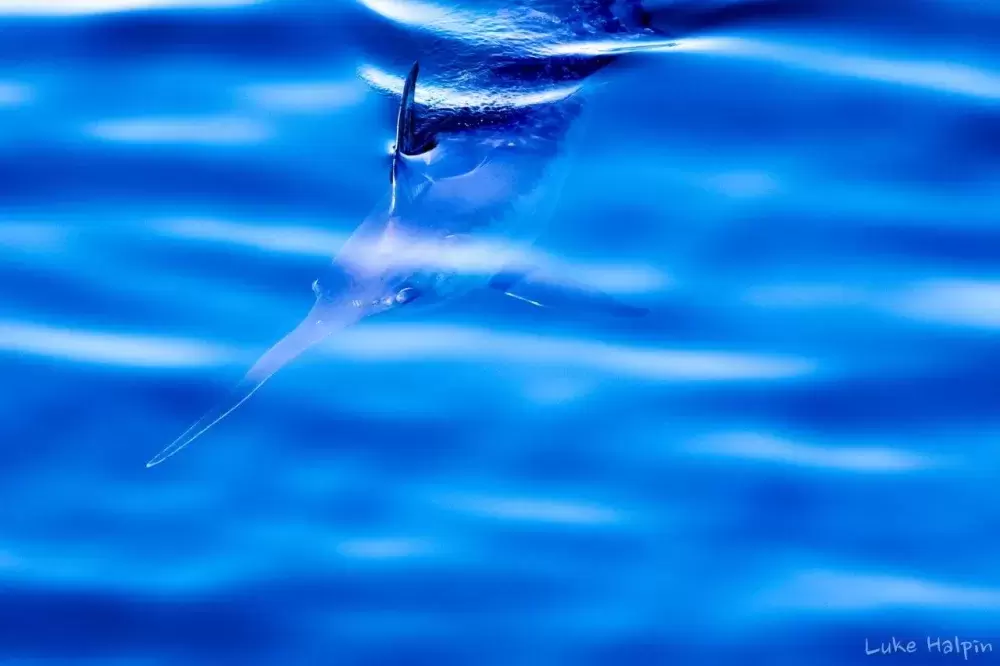The Nuu-chah-nulth nations had an unlikely visitor recently which set the science world on fire. A swordfish was spotted near Kyuquot in September of last year. Biologists in the area were surprised, and are still trying to determine what this could mean for the environment.
“Essentially, we’re seeing more and more warm water species in B.C.,” said Luke Halpin, a biologist and wildlife researcher. “We’ve had increasing incidences of a variety of plankton and fish that are associated with warmer waters, as waters are warming up. And this swordfish is the first recorded on the coast of B.C. and only the second recorded in Canadian Pacific waters.”
Halpin has spent the past few years helping the Canadian Coast Guard service track some of the animals that appear along the B.C. coast. He currently lives in Australia, and is conducting research on a bird species there.
“The other [swordfish] was captured during a Japanese test fishery for squid. It’s not a fish species that’s associated with B.C. at all,” he said, adding the capture of that first swordfish was in the 1980s.
Halpin was aboard the Canada Coast Guard ship John P. Tully when he saw the swordfish swimming along in the water about 37 kilometres west of Brooks Peninsula. He published a short scientific paper on it, with a few colleagues—Moira Galbraith and Ken H. Morgran.
According to the paper, swordfish generally prefer water that is between 18 and 24 degrees Celsius. The waters near Kyuquot in September shouldn’t be that warm that time of year. But when it was measured, it was between 1.5-2.5 degrees warmer than other years.
In his paper, he also gives an elaborate explanation of what a swordfish looks like, for those who have never seen one: “The upper jaw is elongated and extends into a sword-like bill, the dorsal fin is tall and falcate, and the caudal fin is crescentic.”
The dorsal fin is on top of the back, while the caudal fin is the tail. He then writes swordfish do not have any scales or teeth as adults, and that they have two smaller fins underneath their bodies near their tails. The dorsal fin and these other fins help it to glide through water faster. They’re blackish-brown or grey, and somewhat lighter underneath. They stayg between the water’s surface and a depth of 610 metres.
Halpin is concerned this sighting represents global warming and the effect it might be having on the natural world. It would be a critical shift in habitats if creatures from the south move to the north because they can now thrive in those areas. But what the result of that would be, Halpin doesn’t know yet.
He is sure, however, that even if swordfish do move in, they won’t be a rival for local fishermen—swordfish eat smaller fish.
“These are just single occurrences, so it’s really hard to say with any certainty they were found in our waters due to climate change,” said Halpin. “But when you look at the trend elsewhere, as you see with many other warmer water species, it’s reasonable to speculate that warming oceans are the reason we saw them.”
“It’s concerning what’s going to happen to the ocean,” he added. “There’s so much pressure on them, and we’re so dependant on healthy oceans for our own wellbeing.”
Halpin has written another paper on sea turtles, who are also possibly moving into the area. Sightings of a few different species of sea turtles have been occurring more often recently. Halpin’s co-author on the paper (along with Jeffrey A. Seminoff), Dr. Gavin Hanke, is interested in the idea of warm water species moving in - but he believes it’s entirely possible that the sightings are only taking place now because there are more people out looking and recording what they’re seeing.
“The sea surface temperatures right now, we just get these pulses of warm water and things come north with it… it could be even great white sharks,” he said, adding that hammerhead sharks have even come to B.C. waters. “No one got a picture, but there’s a record of a tiger shark near Alaska… and a louvar (another type of fish) was found in Masset. That’s normally found in Mexico.”
Hanke works at the Royal B.C. Museum in Victoria, where some of the body of the swordfish found in the 1980s is archived. He said the two species of sea turtles that have been more present recently are the loggerhead and the olive ridley. An olive ridley washed up on the shores of Tofino in 2011, barely alive, and died a short while later, while the loggerhead was seen in February of 2015.
With the sea turtles, some species—such as the green sea turtle and the leatherback—have been known to come into the area when warm water pulses happen. But they usually make it back south before the cold winter hits. Sometimes they don’t make it, and they become “dopey” and slow from swimming in the cold. Often they will die from this, said Hanke.
The 2011 olive ridley was a case of this. But the loggerhead in February was still alive and swimming—so alive that it was even able to swim away from the oncoming ship. Since February marks the end of the winter, it’s possible the turtle survived the entire winter on B.C.’s coast. But Hanke is with Halpin in that he doesn’t know exactly what this will bring in the future. And he also agrees nature has a way of balancing itself. For humans, though, he isn’t so optimistic.
“Some people are worried because they want B.C. to stay the same as it’s always been. But B.C. has never stayed the same,” he said. “Globally, this planet will always change. I’m more concerned about the human population and how we’re changing the climate, and pollution… That’s the part that worries me.”







